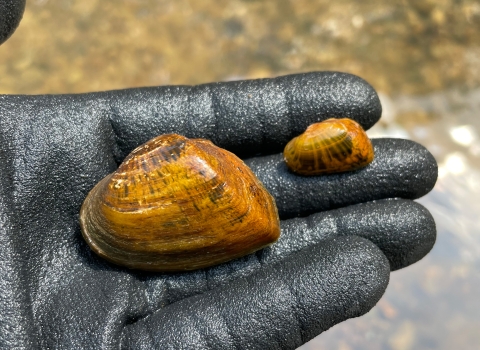Coastal sediment management practices, such as dredging and beach nourishment, can have beneficial and detrimental impacts on the physical and ecological resiliency of barrier islands, particularly when sediment is removed from one barrier island system and placed in another, according to a report released today.
Developed by the U.S. Geological Survey and U.S. Fish and Wildlife Service, the report provides resource managers valuable information they can use to evaluate impacts of sediment removal and placement within barrier islands, including those addressed by the Coastal Barrier Resources System. The CBRS is comprised of relatively undeveloped coastal barriers coastal barriers
Learn more about coastal barrier landforms.
Learn more about coastal barriers along the U.S. Gulf of Mexico, Atlantic Ocean and Great Lakes coasts that are depicted on a set of maps maintained by FWS.
Barrier islands, the narrow low-lying landforms located at the interface of land and sea, play a key role in storm protection for coastal communities and infrastructure and serve as important habitats for many coastal and marine species.
“The study identifies both beneficial and detrimental impacts from sediment management practices depending on where and how they are applied within barrier island systems,” said Jennifer Miselis, USGS research geologist and lead author on the report.
Sediment management actions such as beach nourishment — where sand is added to an area to expand beaches and dunes — are typically done for coastal hazard mitigation, erosion prevention and flood control.
Some of the key findings in the report illustrate how some barrier island sediment management practices can have negative impacts on seafloor habitats, fish and other marine species, beach habitats and dunes, and the coastal sediment supply that ensures barrier island resiliency.
For instance, when sediment is removed from one barrier island system and deposited in a separate system, it may lead to coastal erosion near the removal location or cause longer-term impacts to the supply of sediments to neighboring barrier islands. Ultimately, may alter the islands’ ability to withstand future storms and increases in sea level.
The process of removing sediments from an area, known as dredging, can also alter the quality of nearshore seafloor habitats, such as seagrass beds and fish nurseries, which are critical for supporting economically and ecologically important species. Organisms that live in or on the seafloor, which often serve as food sources for many threatened and endangered coastal and marine species, may be directly excavated during dredging activities. Additional impacts to surface-dwelling species, such as manatees and sea turtles, include direct entanglement in or physical strikes from dredging equipment.
The report also highlights some positive impacts of sediment management. For example, in addition to the short-term protection from coastal hazards beach nourishment provides, it also increases nesting habitats for some coastal wildlife.
“By creating a wider beach, you create more foraging and nesting areas for several species, like shorebirds and turtles,” Miselis said.
However, the timing of beach nourishment is important so the addition of sediments to beaches, dunes and marshes does not interfere with wildlife breeding.
“This report will give decision-makers, resource managers and the public a better understanding of the pros and cons of moving sand within barrier island systems,” Miselis said. “Hopefully, it will show that sometimes short-term benefits can have unforeseen impacts that may affect the health of barrier islands and their ecological stability beyond the life of the sediment management project itself.”
For the study, USGS scientists reviewed existing information about barrier island response to changes in sediment supply via sand mining and removal and impacts to coastal resilience. FWS scientists provided expertise in how changes in sediment supply impact wildlife habitats and species of concern. The report also identifies knowledge gaps that can help prioritize future USGS and FWS research, modeling and monitoring efforts.
The report, titled “Impacts of Sediment Removal From and Placement in Coastal Barrier Island Systems,” can be read here: https://doi.org/10.3133/ofr20211062.
For frequently asked questions, click here https://www.fws.gov/cbra/documents/FAQs-USGS-FWS-Coastal-Barrier-Report.pdf.



